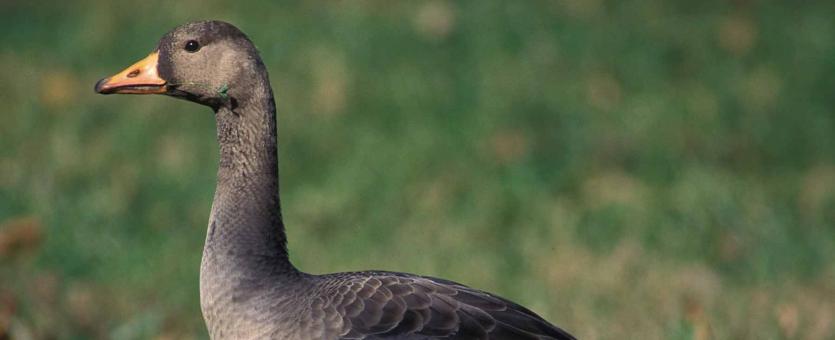
On adult greater white-fronted geese, the upperparts are brown or brownish gray, with the head and neck darker brown; the underparts are white to light brown with several to many black horizontal streaks or splotches. The bill, legs, and feet are bright pink or pinkish orange, and the base of the bill is encircled in white. Immature individuals lack the white at the base of the bill and lack the black bars on the underparts. The call is a yelping, laughing, yodeling sound, “cah-laa-haluk.”
Similar species: To identify geese in flight, observe carefully. Snow geese usually fly in large, multiple-V patterns and have a dark and light mix of the blue and white morphs, giving the flock a salt-and-pepper look. Canada and greater white-fronted geese are very similar, but the white-fronts are more agile and buoyant in flight and have narrower wings; in most lights, both appear dark from a distance. Distinguishing Ross’s goose from the snow goose is always very difficult, because smaller-than-usual races of the snow goose, as well as hybrids, are possible.
Length: 28 inches (tip of bill to tip of tail).
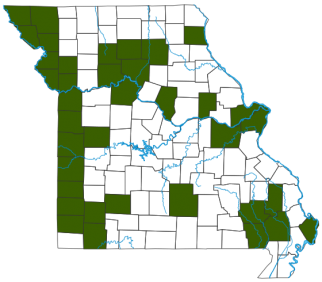
Uncommon migrant statewide. More common in the western half of state; it is more common in western North America than in the east.
Habitat and Conservation
Look for greater white-fronted geese in marshes, waterholes, ponds, lakes, and reservoirs with aquatic vegetation. Often seen foraging in crop fields and pastures. They are often seen in mixed groups with other geese such as Canada geese and snow geese. Look for them at wildlife refuges and other large wetland areas during migration time.
Like other migratory waterfowl, this game species is protected by law. Follow the rules outlined in the Wildlife Code of Missouri.
Food
They forage in cornfields, newly sprouted winter wheat fields, and marshes for grains, roots, grasses, or aquatic vegetation. They also forage in crop fields for grains, or in pastures, marshes, and lakeshores for grasses and sedges. They sometimes forage by dabbling in shallow water, like mallards and dipping ducks, by “tipping up.”
Status
Uncommon transient; accidental summer visitor; as a winter resident, uncommon in southeastern Missouri and rare elsewhere.
Globally, populations appear fairly stable. The US Fish and Wildlife Service and other conservation agencies monitor populations and adjust hunting regulations in order to keep populations healthy.
Life Cycle
Present in Missouri from late September to early May; numbers are highest from mid-October to early March. Missouri is on the eastern part of the Central Flyway, the migration path that our populations of greater white-fronted geese take. (Other populations fly along the western part of North America.) The greater white-fronted geese that we see are migrating between their wintering territory in Mexico, Texas, and Louisiana, and their breeding range in the tundra of Canada’s northern territories and Alaska.
In their northern breeding lands, female greater white-fronted geese make simple nests on the ground among grasses and shrubs, often near water or in wetlands. There is only 1 brood each year; clutches comprise 1–8 eggs, which are incubated for 22–27 days. Young stay in the nest for only about 1 day.
As with many other geese, greater white-fronted geese are monogamous over many years, and pairs stay together throughout the year and for years afterward. Their young typically stay with them for a year, helping their parents’ nesting efforts. Individuals usually do not breed until after two and a half years of life. Lifespan can be 25 years.
Human Connections
As with many other migratory birds, this goose could lose substantial portions of its northern breeding territory is climate change goes unchecked.
Due to overhunting, this species was in serious decline in North America in the early 20th century. With international, federal, and state game laws protecting waterfowl and their habitat, their populations are healthy today.
If this is the “greater” white-fronted goose, is there also a “lesser” white-fronted goose? Yes! It occurs in Eurasia, is closely related, and is indeed smaller.
Ecosystem Connections
Migratory animals play a role in every ecosystem they travel through, as well as in their breeding and overwintering places. Although it takes a fairly large predator to capture an adult goose, the defenseless young and eggs fall prey to a variety of meat-eaters.

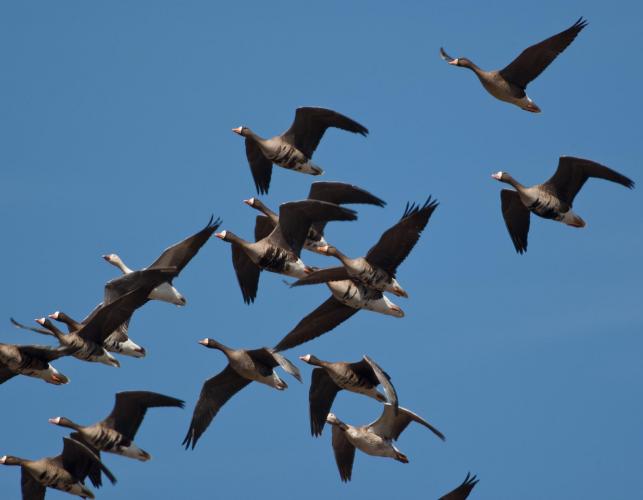

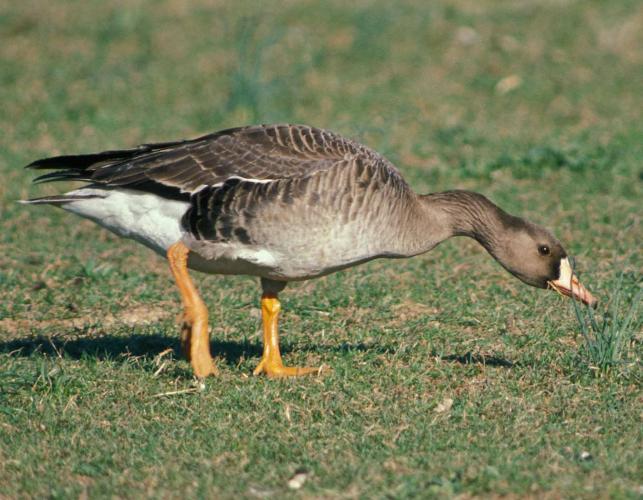


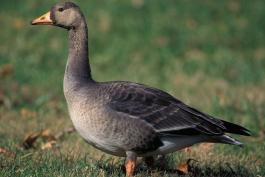
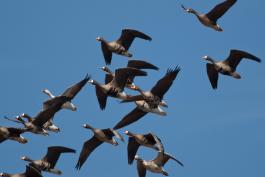
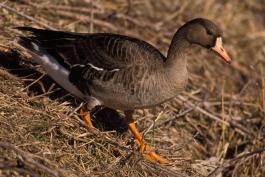

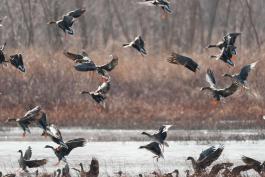
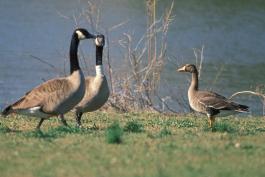
About 350 species of birds are likely to be seen in Missouri, though nearly 400 have been recorded within our borders. Most people know a bird when they see one — it has feathers, wings, and a bill. Birds are warm-blooded, and most species can fly. Many migrate hundreds or thousands of miles. Birds lay hard-shelled eggs (often in a nest), and the parents care for the young. Many communicate with songs and calls.





















